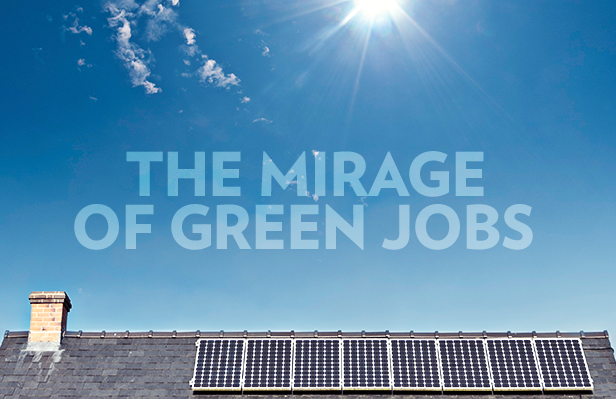Media

The Mirage of Green Jobs
Promoters of the U.S. Environmental Protection Agency’s carbon-emission regulation attempt to playdown the jobs it would kill with promises of “green jobs”. Yet these positions pay less and are largely dependent on unreliable taxpayer subsidies for solar and wind.
“We are applying for federal grants to retrain miners for jobs that will pay less than half of what they can make in the mines,” says Robbie Matesic, executive director of the Greene County Department of Economic Development. “The hardest thing is telling a third-generation coal miner that the layoff this time isn’t just a fluctuation in the market, but will be permanent.”
A combination of tightening environmental regulations and competition from natural gas has the coal industry struggling for survival. The latest EPA effort to combat global warming seeks to sharply decrease emissions of carbon dioxide from power plants, but it's projected to reduce the earth’s temperature by less than one-tenth of a degree Celsius by the year 2100.
Still visions of green jobs are routinely advanced by environmental interest groups, President Obama and other politicians as they push EPA’s “Clean Power Plan.”
“When you shift to renewables, you’re creating good green jobs in wind and solar,” says state Rep. Greg Vitali (D-Delaware and Montgomery). “It’s really a job creator when you’re shifting to renewables.”
Sounds nice: You replace “dirty” coal with trouble-free “green” jobs. No fuss, no muss, just nirvana. But it hasn’t worked in the past, according to the Pittsburgh Post-Gazette’s PowerSource:
“The solar sector in Pennsylvania has shed 30 percent of its workforce since 2012, when the state ranked fifth in the country with 4,000 jobs, according to (The Solar Foundation). Pennsylvania’s 2,800 jobs in 2014 placed it at 15th in the country and, when looked at as a percentage of the state’s working population, the state dropped to 37th…
“Factors in the shift include a Pennsylvania rebate program that vanished, a federal tax credit that is scheduled to wane and the fact that the state’s market for renewable energy credits — designed to incentivize projects and prove compliance with the state’s renewable goals — has suffered from oversupply with credits purchased from other states.”
The Pennsylvania Manufacturers’ Association estimates that each green job costs taxpayers $300,000 in subsidies.
Back in Greene County, Ms. Martesic sees more possibilities for displaced coal workers in metals and advanced materials manufacturing, although she says that the transition will take more than “a year or two” that regulators currently are allowing. She also says manufacturing will require “reliable energy” supplies. In other words, energy that’s available when the sun isn't shining and the wind isn’t blowing.
With the possible demise of coal-fired plants that supply 40 percent of the state’s electricity, and the limitations of today’s renewables, it is disingenuous to ignore the significant job losses Pennsylvanians will experience if the EPA gets its way.